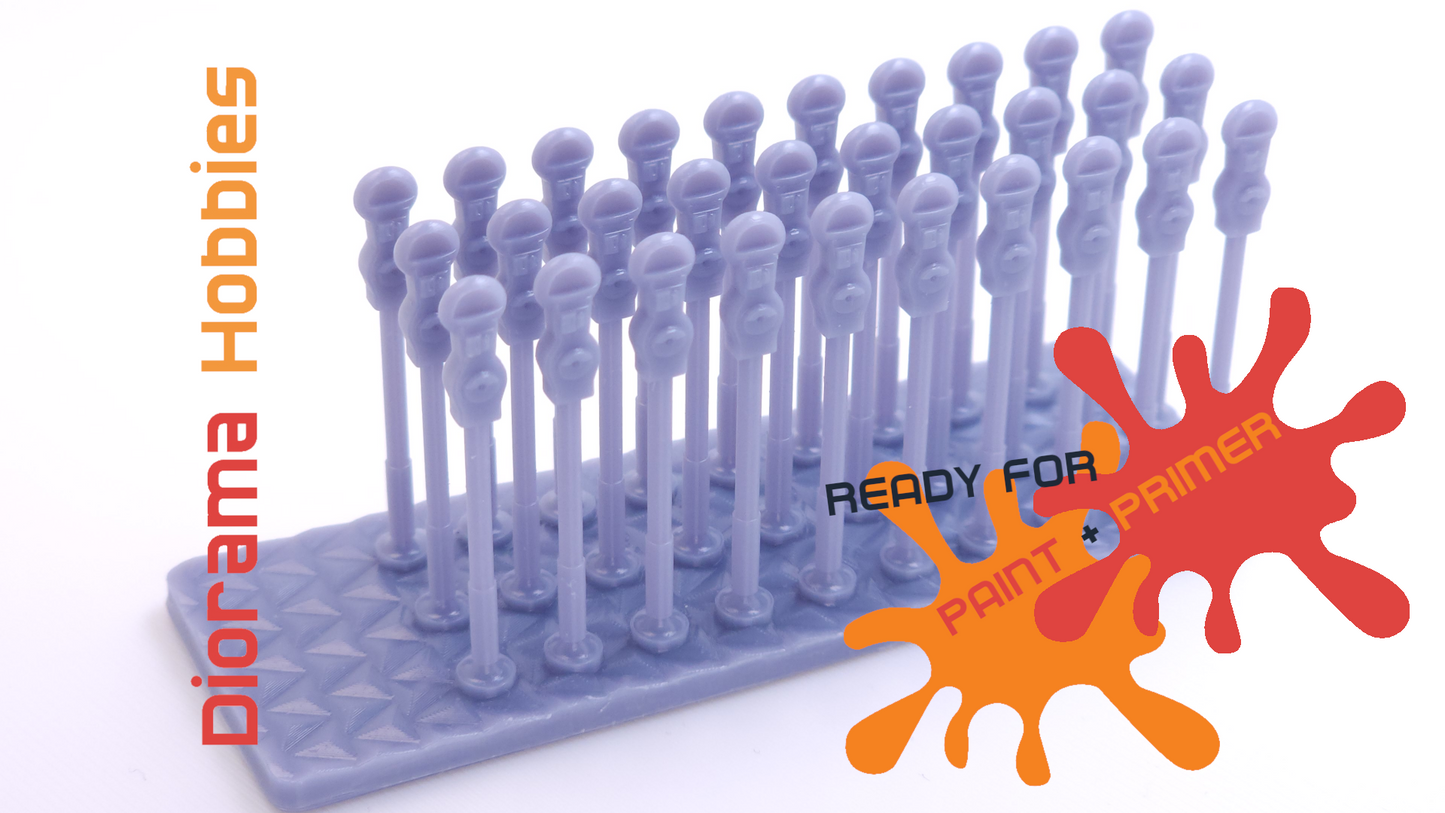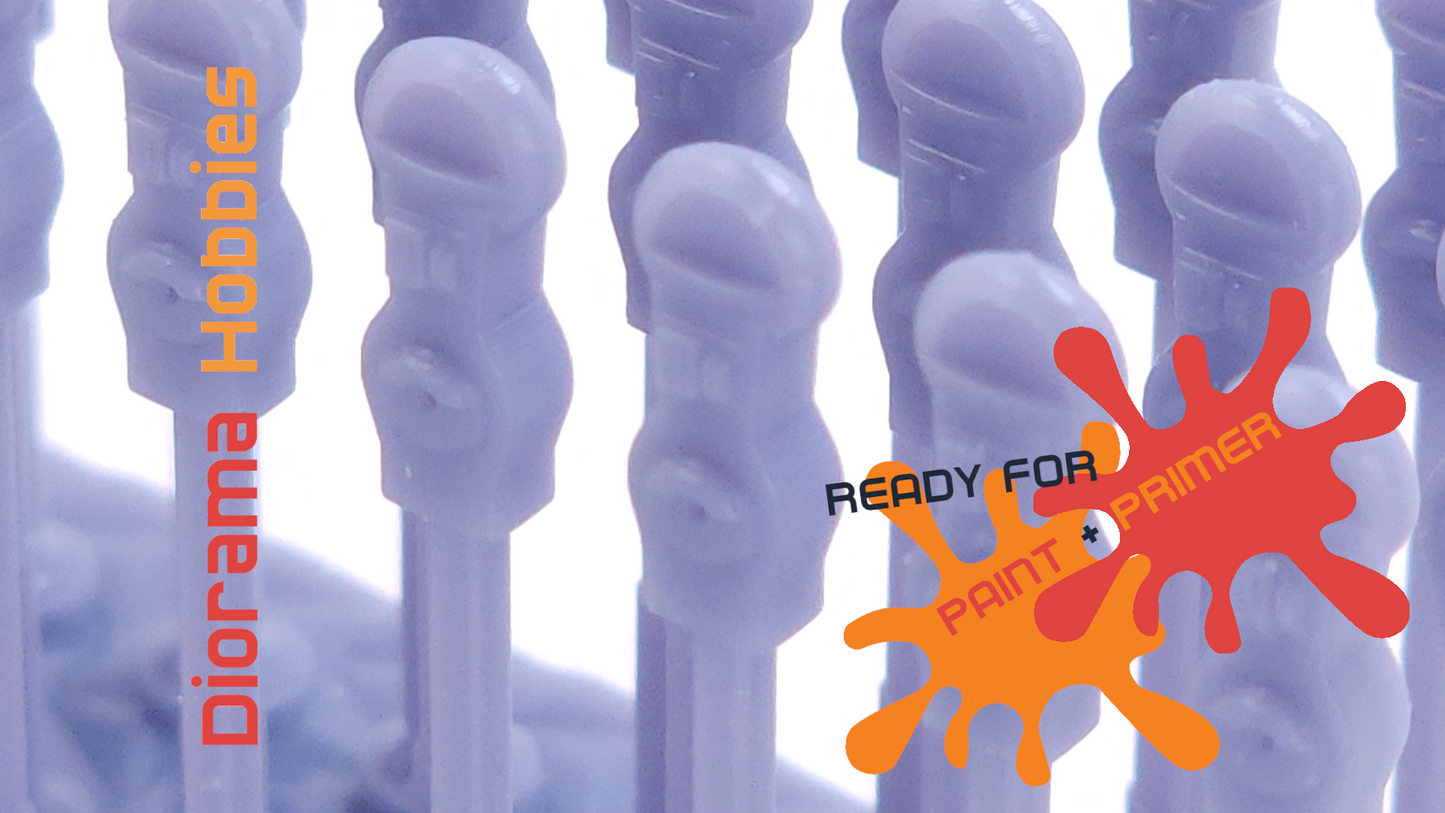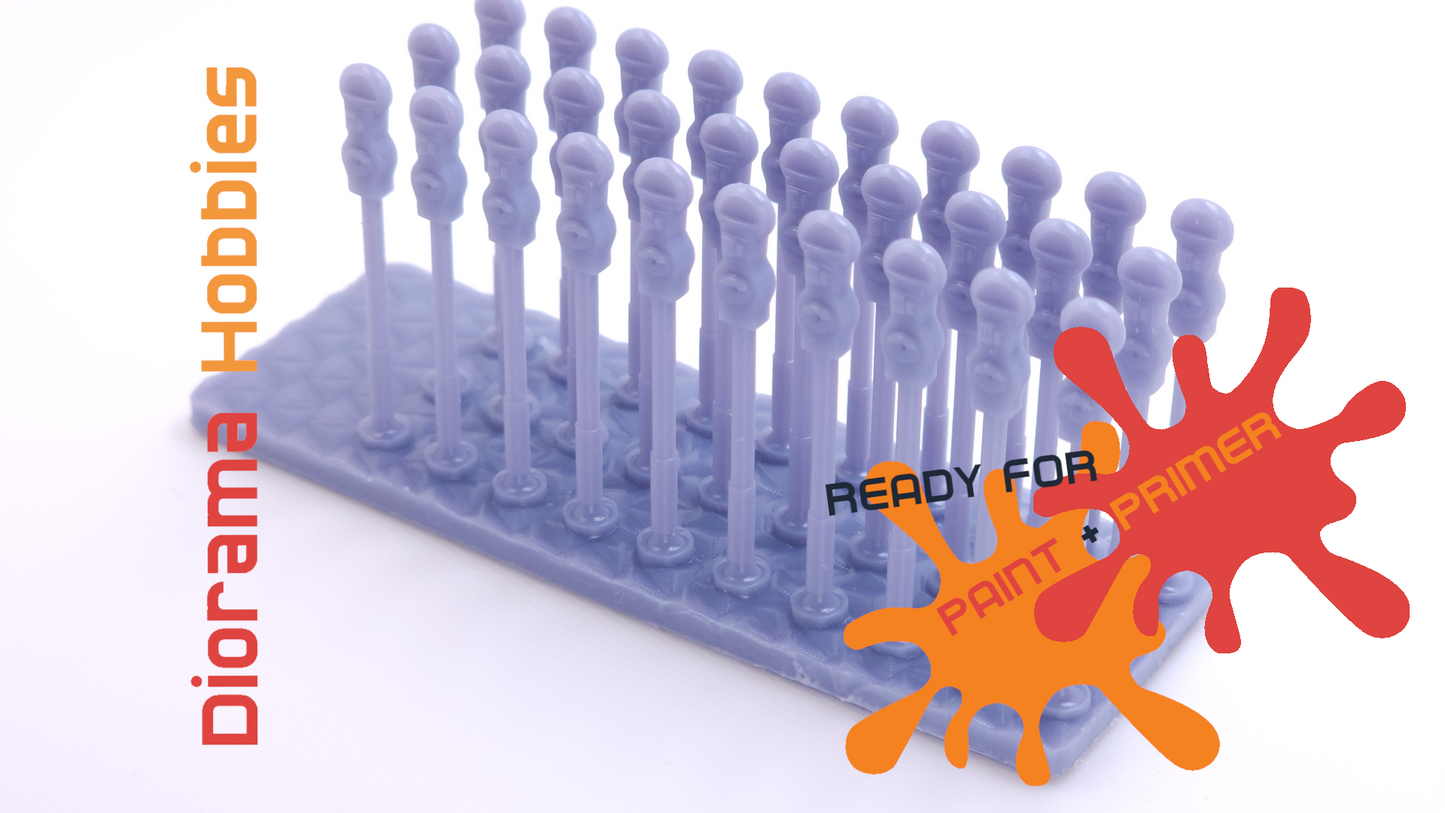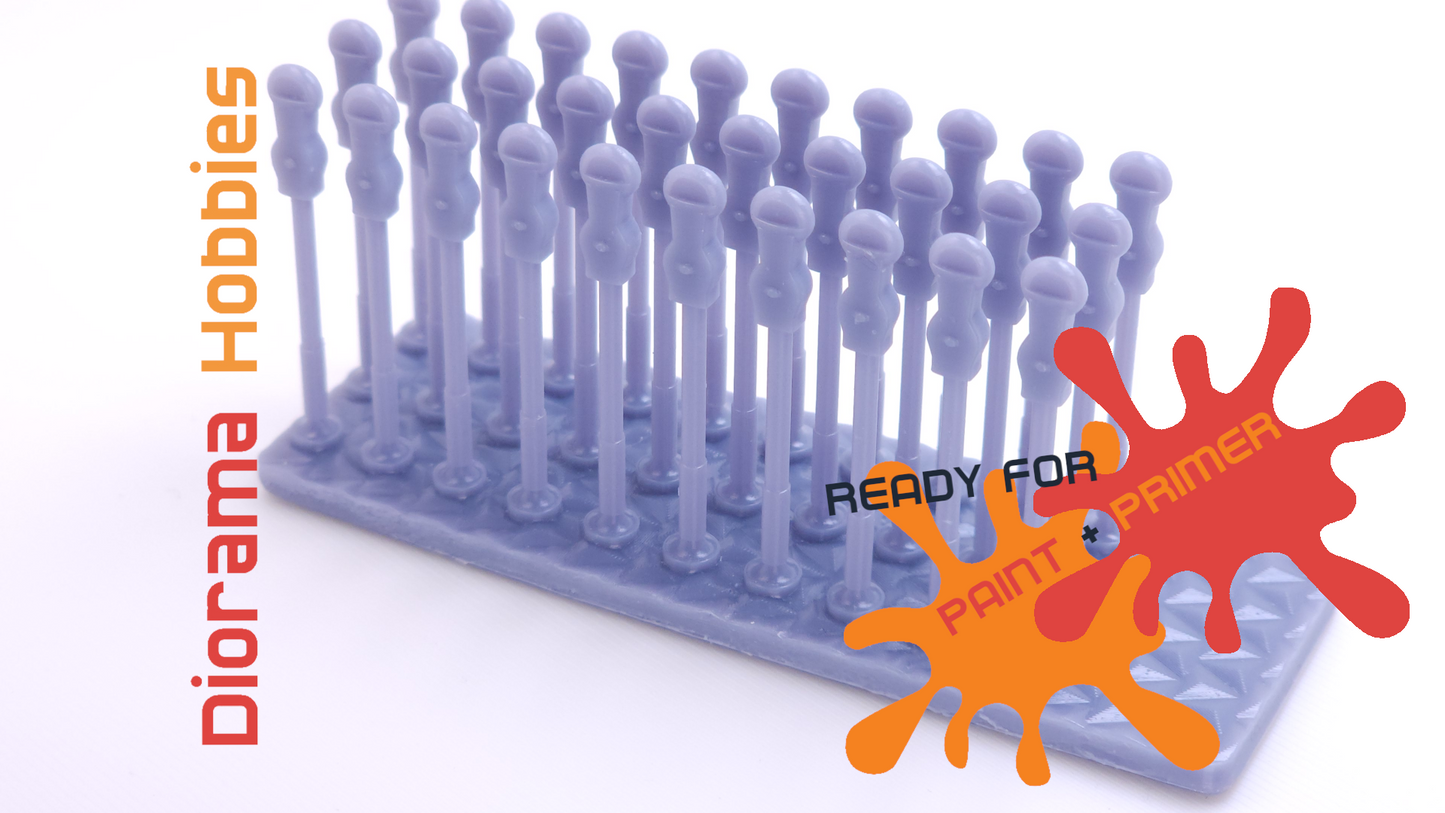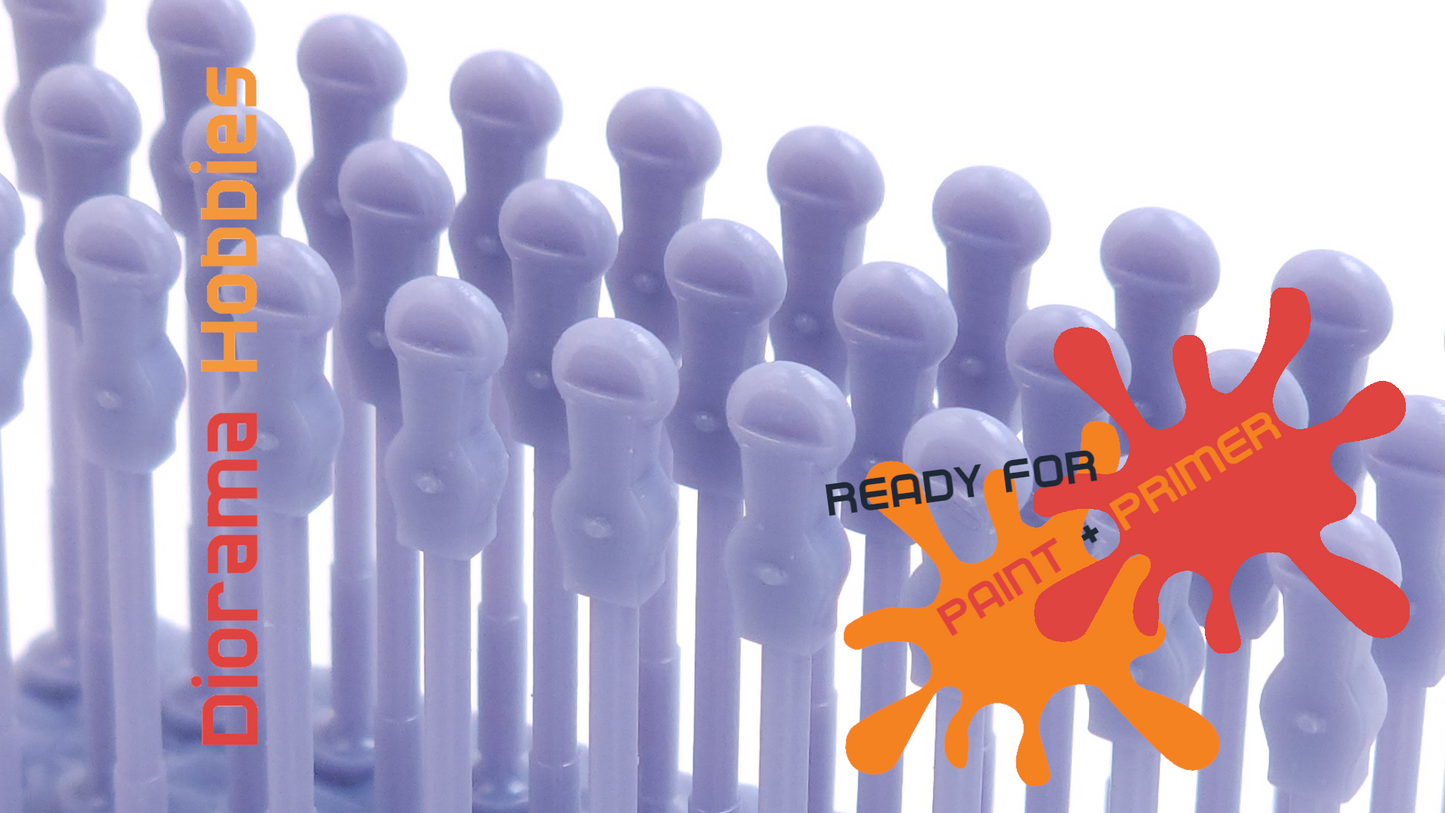Diorama Hobbies
Coin-Operated Parking Meters (30/21 pack) HO, S and O Scales
Coin-Operated Parking Meters (30/21 pack) HO, S and O Scales
Couldn't load pickup availability
Add a touch of historical accuracy to your model scenes with our set of 30 finely detailed Coin-Operated Parking Meters. Available in HO, S, and O scales, these miniatures replicate the classic design of parking meters commonly found on city streets. Each meter is intricately crafted with realistic details offering an authentic look that will elevate any urban, suburban, or historical diorama. Perfect for recreating scenes from the mid-20th century through today, these parking meters bring a functional and nostalgic element to your layouts.
History:
Coin-operated parking meters were introduced in the early 1930s as a response to the growing problem of traffic congestion in urban areas. The first-ever parking meter was installed in Oklahoma City in 1935, designed by Carl Magee. These early parking meters were mechanical devices that allowed motorists to pay for parking in designated areas by inserting coins, typically a nickel or a dime, into the meter in exchange for a set amount of parking time.
As cities grew and car ownership became more widespread, parking meters became essential tools for managing limited parking space, ensuring fair usage and generating revenue for city governments. Over the years, the design of parking meters evolved, with later versions incorporating digital displays, multi-space meters, and even credit card payment options. However, the classic coin-operated parking meter remains an iconic symbol of mid-20th century urban life. Our miniature Coin-Operated Parking Meters capture this iconic piece of history, allowing you to bring an authentic touch to your model urban streetscapes, offering a glimpse into the past when parking meters were first introduced as an innovative solution to the growing demands of city traffic.
Materials: Resin
What you need to know:
Parts DO NOT ship painted or primed and my require assembly.
Parts may ship with supports that require removal. Use of snips is recommended to remove supports to avoid damage.
Handle parts with care as they can be brittle.
Keep away from small children.
Share
